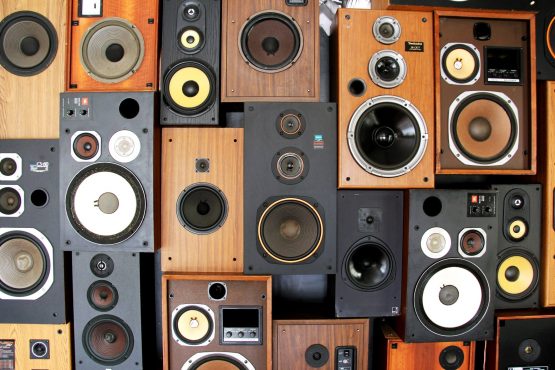In Dolby’s own words, “the most significant development in cinema audio since surround-sound.”
Dolby Technology takes all surround sound to the next level with pure 3-Dimensional audio
Dolby Digital and Dolby Atmos
Dolby Digital is also known as AC-3. It’s an audio coding technique that reduces the quantity of data needed to produce top-quality sound.
DD takes advantage of how we perceive sound.
When coding noise is close to an audio signal’s frequency, that sound signal masks the noise so that the human ear hears only the intended audio signal.
The amount of data gets reduced to one-tenth of the data on a compact disk by removing the noise.
Dolby Digital is compatible with digital versatile discs (DVDs), high-definition television (HDTV), and digital cable and satellite transmissions. Dolby Digital is the audio standard for digital TV.
Dolby Atmos
Dolby Atmos is an audio format designed to bring the immersive, 360-degree sound that you can get in a cinema or theater.
That means that Atmos technology can reproduce the sound of something as big as a jet engine sound or as small as a pin drop in the floor, making it sound spatially accurate. You can even hear noises coming from overhead or say a person is talking in the rain. You can listen to the storm smashing the umbrella from above and the ground. Dolby Atmos adds another dimension to surround sound and transports you right into the cinematic experience.
Both Dolby Digital and Dolby Atmos uses sound enhancement tool software that delivers premium quality sound. Dolby Digital, however, provides sound from your existing speaker setup while Dolby Atmos uses the software and compatible hardware.
Therefore, Dolby Atmos creates a more superior sound experience than Dolby Digital because of the required hardware.
For Dolby Digital, once an illusion of someone behind the audience needs to be created, the sound is thrown to the intended speaker. This is because Dolby Digital is a speaker-based system.
Dolby Atmos, on the other hand, does not push the sound to a particular speaker. Instead, it pushes the music to a 3D space.
How does it work?
Atmos is a surround-sound technology that was developed initially in 2012. It expands upon the current 5.1 and 7.1 surround-sound setups with surround channels coming from overhead
Dolby Atmos is all about the detail. For realistic sound, the tech uses a 9.1-bed channel consisting of stationary sounds like background sound and music, 128 tracks, and up to 118 simultaneous sound objects to create an immersive sound stage, 3D.
In typical home theater surround sound, set up sound travels in a horizontal plane only.
But with object-based audio, sound also travels vertically and can be positioned in space.
Speakers are placed along walls no matter the height. At times behind the screen itself, With Atmos, you can place speakers in the ceiling, engulfing the audience in sound.
If the ceiling speakers are not possible, there are other options like the upward-firing speakers which bounce off the ceiling and simulate ceiling speakers.
Difference between Atmos and surround sound
The difference between Dolby Atmos and traditional surround sound is the use of channels. Audio over conventional surround sound is limited to 5.1, five speakers, one subwoofer or 7.1, seven speakers, one subwoofer channel. In this kind of setup, you can hear a jet moving from right to left or vice versa, but the system can’t reproduce the sound of a jet engine flying above you. Put this way, it lacks positional freedom, which takes away from the overall immersion factor.
Dolby Atmos ditches the 5.1 and 7.1 channels and assigns the sound objects to a place. Meaning that if a sound occurs in the top left corner of the room, the audio will have spatial accuracy instead of being relegated to the left speaker. And because Atmos compatible speakers have integrated upward-firing drivers, you have a height advantage achieved by bouncing the sound off of your ceiling to replicate the ceiling-mounted height speakers.
What devices support Dolby Atmos?
Dolby has partnered with several manufacturers to infuse Atmos Technology into a range of products, including TVs, mobile phones, some computers, and video games.
Movies that have Dolby Atmos Sound Technology include:
- Mad Max Fury Road.
- Deadpool.
- Gravity.
- Unbroken.
Have you tried Dolby Atmos? Please share your experiences with us in the comments!

